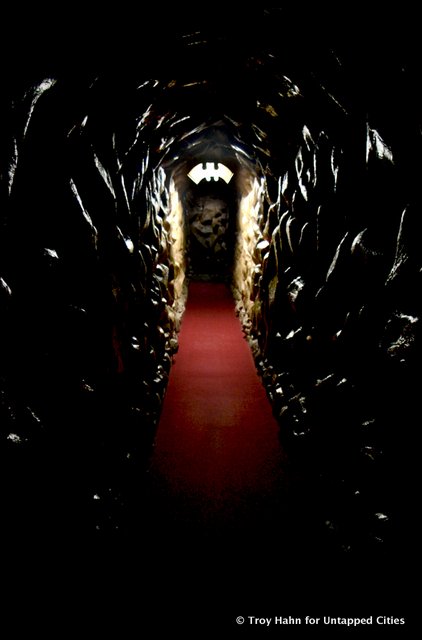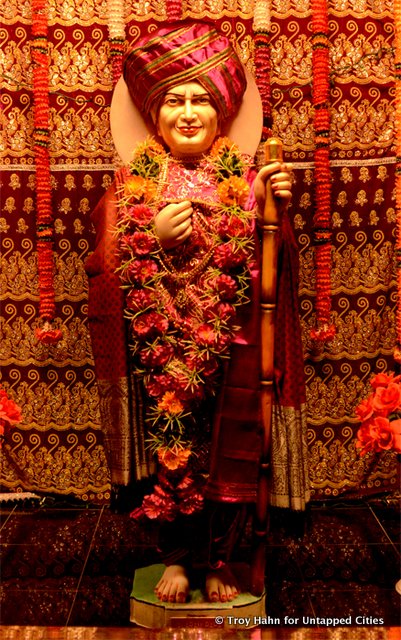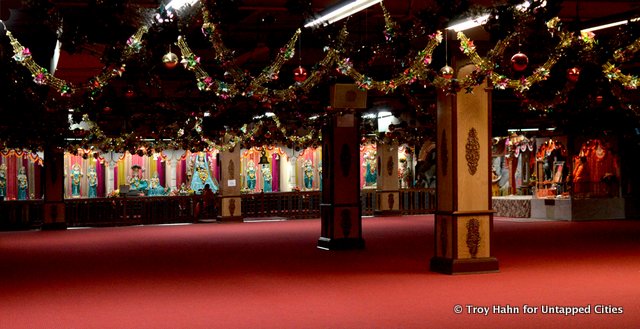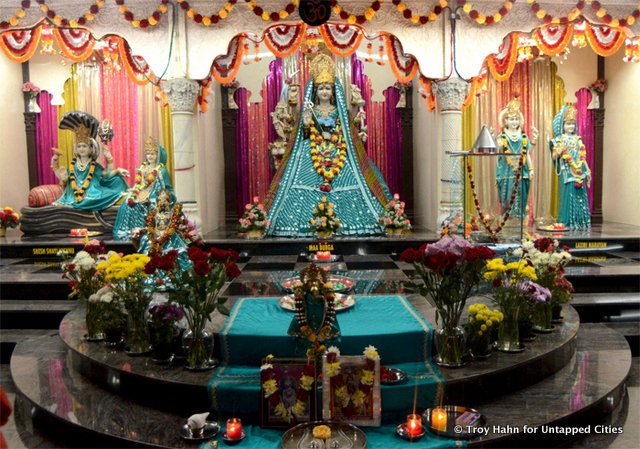
The November sun is setting early on this very non-descript street in Woodside, Queens where I’ve ventured to visit the Divya Dham Temple, what the New York Times described as “vast temple complex and living history museum.” The sign reads “Divya Dham The House of Worship.” I’ve arrived at a spiritual oasis in the the middle of what once was the heart of Western industry. People exit and enter casually through the door as I gather the courage to enter the unknown. The temple is dimly lit with sporadic swatches of green florescence highlighting the alters of various hindu divinities. I stand wondering where to begin this journey. A man in a tiny frame in his mid 70’s reaches for the huge brass bell to mark his arrival, the thunderous sound is meant to wake the gods; it simply brings me back to earth.
“Man is made by his belief. As he believes, so he is.”
Orphaned as a boy, Swami Jagdishwarananda was taken in by prominent chief Swami who became his guru. Educated in Varanasi and Calcutta, Swami Jagdishwarananda was given his religious name on becoming a holy man. Swami Jagdishwarananda passed away December 15, 2005. His original name is unknown.
Swami Jagdishwarananda Nand Ji Maharj opened the Divya Dham Temple (translation: “heavenly place”) in 1993, transforming a defunct electronics factory into a beautiful Hindu Ashram and museum, one of the largest Hindu temples in the United States. Divya Dham features a model of the Himalayas, showing the Ganges river appearing at its source, a Shivala with a man-made 30-ton Shiva Lingam, a Shakti Peeth housing the 51 forms of the Divine Mother, and a man-made cave that houses the Vaishno Devi shrine where the Divya Jyoti burns day and night.
In 1995 the Swami travelled to India to bring back an eternal flame, known as the Divya Jyoti, to the Divya Dham Temple. He combined the holy flame from 52 sacred sites in India to form a single light. The flame’s journey really is a story of its own, as no airline would permit the flame onboard. With the help of many and advice from members the International Olympic Committee, the light travelled on land through Central Asia, Europe and across the English Channel, there it departed by boat to California. From there, the Divya Jyoti made its final trip cross-country to Queens. The Divya Jyoti was ceremoniously lit at the Divya Dham altar in 1996. Devotees could then worship the same flame associated with other sacred shrines across India.
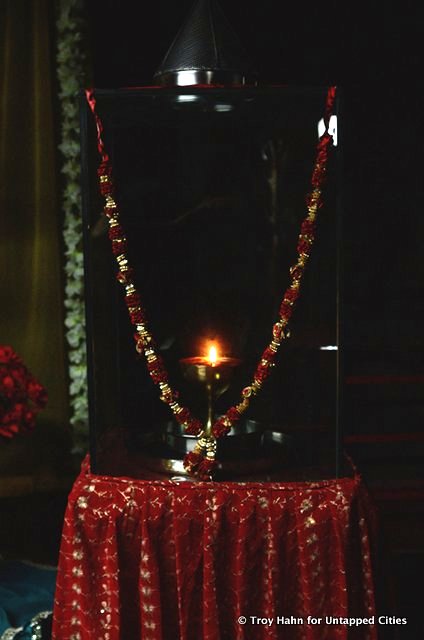
Another roar of the grand bell as a small woman scurries past with a big box of fruit. I’ve arrived on the Hindu New Year. A Swami who greets me at the entrance explains that the fruit is to be distributed to those who are in need of nourishment. I’m looking for some direction on how to explore this vast space; he simply smiles to me and points. He slowly disappears into the dimly lit room with an energy reverse of the White Rabbit’s mutterings “Oh dear! Oh dear! I shall be too late!”. Ahhh, clinging to my westernized philosophies, I seem to be chasing Lewis Carroll’s polar opposite muse down the rabbit hole (without my shoes, no shoes are to be worn in the temple).
To describe the Divya Dham Temple really is an impossible task, these photos only begin to illustrate what is there. From elaborate altars, to the use of dangling gigantic ornaments, miles of garland and holiday lights. I’m not sure what came first, 60’s clay animated Christmas shows of my childhood or this amazing place. The sheer amount of detail that goes into each shrine is beyond incredible. The energy within this place leaves me exhausted but never wanting to leave. One visit is certainly not enough to take all this in, and like my days of yore, the story of Alice in Wonderland always left me wanting more.






